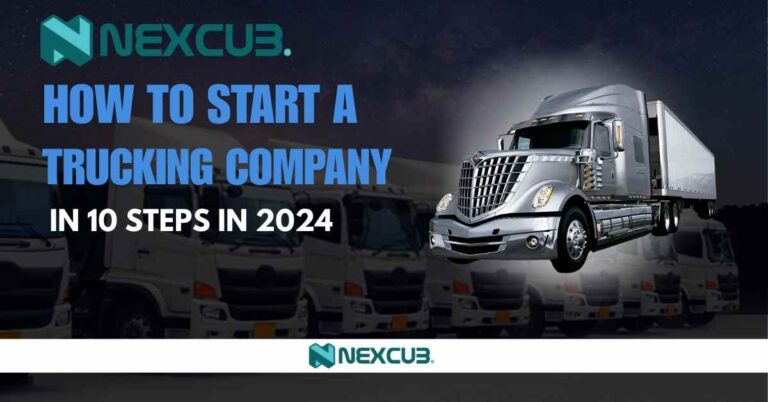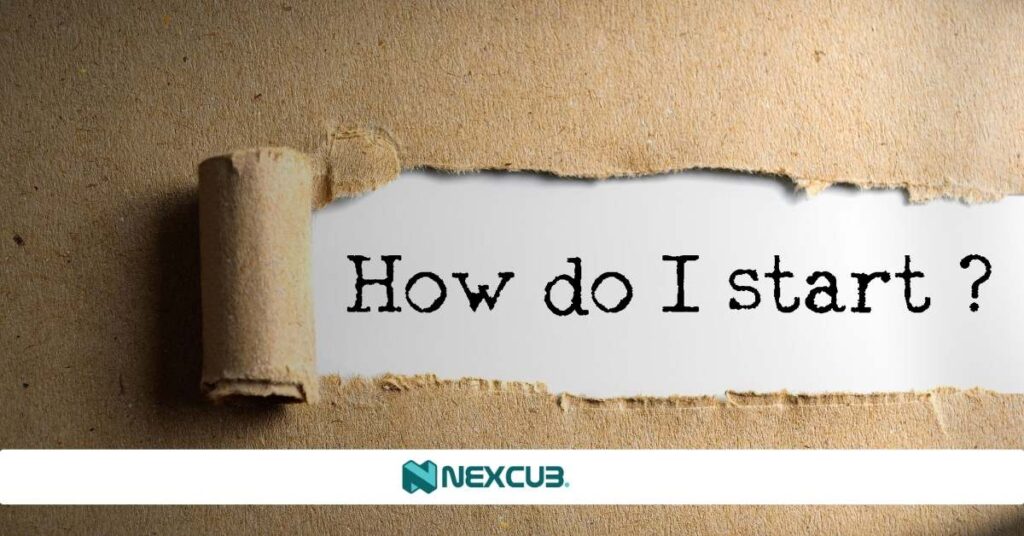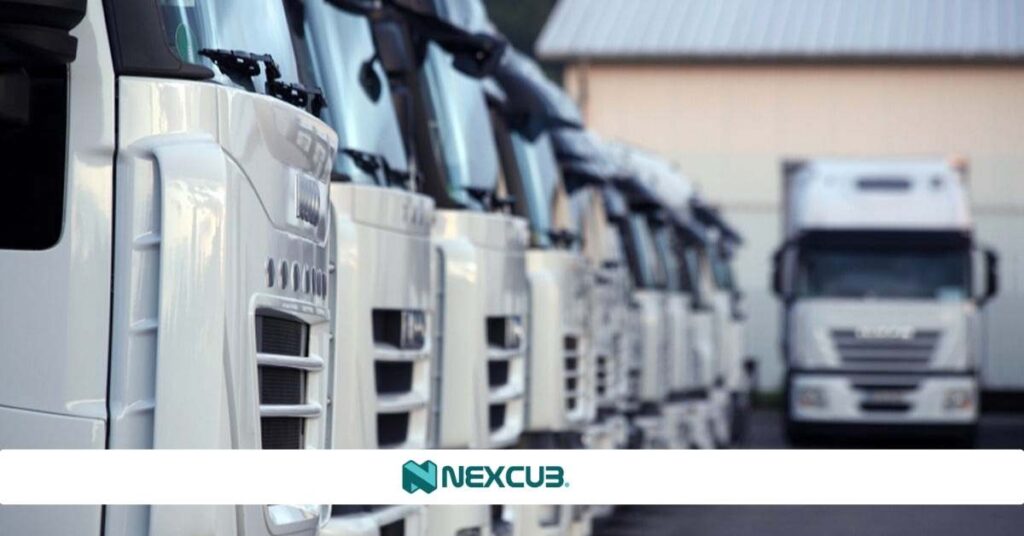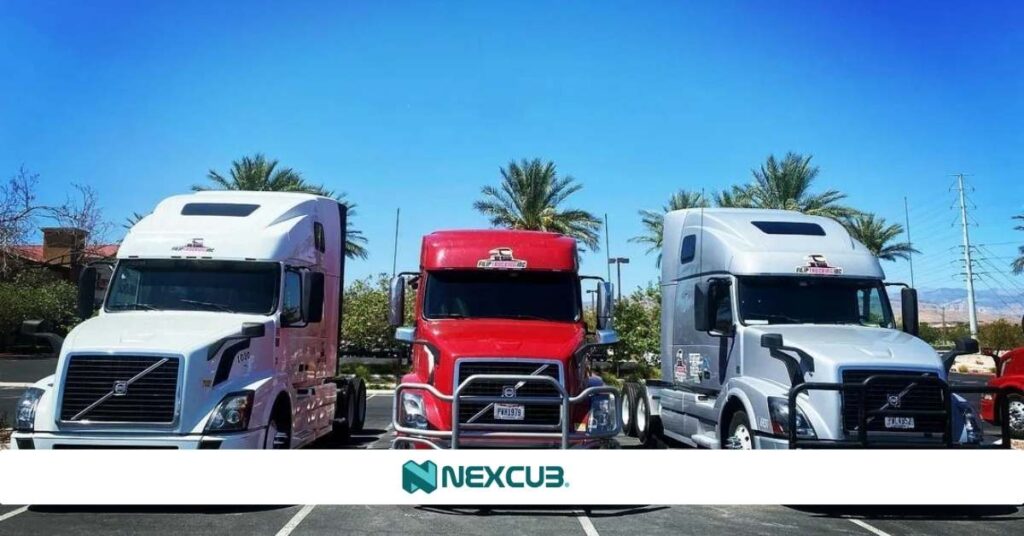Our Location
304 North Cardinal St.
Dorchester Center, MA 02124

Starting a trucking company in 2024 is an exciting opportunity to tap into the ever-growing transportation industry. With freight demand surging, a well-planned trucking business can provide financial independence and long-term success. Whether you’re a seasoned driver or a first-time entrepreneur, knowing the right steps is crucial to avoiding costly mistakes.
Ready to hit the road to success? This guide will show you how to start a trucking company in 10 simple steps tailored for 2024.
The trucking industry is the backbone of the U.S. economy, responsible for moving over 70% of all freight annually. It encompasses a wide range of services, from local deliveries to cross-country hauls, catering to diverse sectors like retail, manufacturing, and agriculture.
In 2024, advancements in fleet management technology, such as GPS tracking and electric vehicles, are transforming operations, while regulations ensure safety and compliance. The industry faces challenges like driver shortages and fluctuating fuel prices, but demand for reliable transportation remains high.
For aspiring entrepreneurs, understanding market trends, competition, and operational requirements is essential.
Building a trucking company from scratch requires careful planning and execution. Here are five essential steps to get started: research the market, create a solid business plan, secure the right permits, invest in reliable equipment, and hire qualified drivers.

By following these steps, you can lay the foundation for a successful trucking business in 2024.
Creating a business plan is the first crucial step in starting a successful trucking company. A well-structured plan helps outline your goals, identify your target market, and manage finances effectively. It acts as a roadmap for your business, guiding decisions and attracting potential investors.
Key elements to include in your trucking business plan:
A strong business plan sets the stage for long-term growth and success.
Selecting the correct business structure is essential when starting a trucking company, as it determines your tax obligations, legal liabilities, and operational flexibility. Common structures include:
Evaluate your business size, goals, and legal considerations before deciding. A well-chosen structure supports your company’s growth and ensures compliance with state and federal laws.
To operate legally, you must register your trucking company at both state and federal levels. This includes:
These registrations establish your company as a legal entity, allowing you to bid for contracts and build trust with clients. Staying compliant from the start ensures smoother operations and avoids costly fines or delays.
Choosing the right target market is critical for a successful trucking company. Your market defines your services, pricing, and overall strategy. Begin by analyzing industry demand and identifying specific niches, such as:
Understanding your potential customers’ needs helps tailor your services and build a competitive edge. For example, focusing on high-demand industries like agriculture or construction can provide steady revenue. Researching market trends and competitors ensures you position your trucking company effectively to meet client expectations.
Once you’ve defined your market, it’s time to legally establish your trucking business. Follow these steps to ensure compliance:
By completing these steps, you solidify your company’s legal standing and create a trustworthy foundation for future growth.
To start your trucking company, you’ll need to secure trucks and essential equipment. This step involves selecting the right vehicles based on your business needs, whether you’re hauling freight or offering local delivery services.
When acquiring trucks, consider factors like fuel efficiency, maintenance costs, and durability. You can either buy new trucks, which come with warranties and lower maintenance costs, or opt for used trucks to reduce initial expenses.
In addition to trucks, you’ll need equipment like trailers, GPS tracking devices, and safety gear. Make sure your fleet meets DOT safety regulations and has the proper insurance coverage to operate legally. Properly maintaining and regularly servicing your trucks will keep operations running smoothly and minimize downtime.
Building a competent team is crucial to the success of your trucking company. Key roles to fill include:
Hiring the right team members who are skilled and reliable will ensure your company’s operations run efficiently, maintain safety standards, and foster positive customer relationships.
A reliable fleet management process is crucial for smooth operations. This involves overseeing your trucks, drivers, and maintenance schedules to ensure everything runs efficiently.
Start by implementing GPS tracking systems to monitor routes, fuel usage, and driver performance. This helps in reducing costs, improving delivery times, and maintaining compliance with regulations.
Additionally, set up a system for routine vehicle maintenance, ensuring trucks are serviced regularly to prevent breakdowns. Driver management is also a key part of fleet management, so track hours, ensure compliance with hours-of-service regulations, and provide ongoing training.
A well-organized fleet management process enhances productivity and extends the lifespan of your trucks.
Finding customers is essential for a thriving trucking company. Start by identifying your target market whether it’s businesses needing long-haul transport, local deliveries, or specialized services.
To attract clients:
Building strong relationships with clients and offering exceptional service will help you retain customers and secure repeat business.
Once everything is in place, it’s time to launch your trucking company. Create a grand opening strategy to announce your services to potential clients. Utilize social media, email marketing, and local advertising to spread the word. Offer introductory deals or promotions to attract your first customers. Build strong relationships by consistently providing excellent service and timely deliveries.
Additionally, maintain a strong online presence through a professional website and SEO, ensuring your business is easy to find by people searching for freight or transportation services.
Starting a trucking company in Europe can cost anywhere between €10,000 to €100,000 depending on factors such as fleet size, equipment quality, and operating region.
Initial costs include purchasing or leasing trucks, securing licenses, and meeting regulatory requirements such as EU transport regulations. Additional expenses like insurance, maintenance, and hiring qualified drivers also factor into the total startup cost.

If expanding across borders, consider expenses for international freight permits and tolls. Carefully estimating these costs will help you determine a realistic budget and ensure financial stability as you grow your trucking business.
Starting a trucking business with no money is challenging, but not impossible. One way to begin is by using leasing options for trucks, which allows you to avoid large upfront costs.
You can also consider truck driver partnerships or work under another company’s authority until you can afford your own equipment. Another option is applying for small business loans or finding investors to fund your startup.
However, even without money, you’ll need to invest in business licenses, insurance, and marketing to build a customer base. While it’s possible, expect to face financial hurdles in the early stages.
Yes, the trucking business can be very profitable if managed correctly. It offers stable demand, as the transportation of goods is essential across industries. Profitability depends on factors like operating costs, fuel efficiency, maintenance, and route planning.
Large fleets and long-haul trucking typically generate higher profits, but small businesses can also thrive with local deliveries or specialized services. A well-managed trucking company can achieve a solid return on investment, especially when keeping costs low and maximizing efficiency.
Yes, you can start a trucking business with one truck. Many small business owners begin with a single vehicle, offering local delivery services or short-haul freight. The key is to focus on a niche market and provide excellent service to build your reputation.
You’ll need to cover costs like fuel, insurance, and maintenance, but starting small allows you to grow gradually. As you gain clients and profits, you can expand your fleet and services. Starting with one truck is a manageable way to enter the trucking industry.
There are several types of trucking businesses, each serving different needs in the logistics and transportation industry:

Each type has its own challenges and opportunities, so it’s important to choose one based on your budget, skills, and goals.
Also Read : How to Start a Window Cleaning Business
The most profitable trucking businesses typically include long-haul trucking and refrigerated trucking, as these services often command higher rates due to distance and the need for specialized equipment.
Flatbed trucking and specialized hauling for oversized or heavy loads can also be lucrative, as they cater to niche markets with higher profit margins. Additionally, owning a fleet and offering logistics services or becoming a freight broker can generate substantial income in the trucking industry.
Starting a trucking business in 2024 offers numerous opportunities, whether you begin with one truck or build a large fleet. Success requires careful planning, understanding of industry regulations, and the right strategy for acquiring customers.
From choosing the right business structure to managing your fleet efficiently, each step plays a crucial role in ensuring long-term profitability. By staying adaptable and focusing on high-demand services, you can turn your trucking business into a sustainable and rewarding venture.
The best trucking business to start depends on your budget and goals. Owner-operator or local delivery trucking businesses are great for beginners, while long-haul or specialized trucking can be more profitable for those with more resources.
Start by obtaining the necessary licenses and permits in the Philippines. Purchase or lease a reliable truck, secure insurance, and offer local deliveries to build a client base. Gradually expand as your business grows.
A trucking business plan should include an overview of services, target market, financial projections, operational structure, and marketing strategy. Outline your budget for trucks, fuel, and maintenance, along with long-term goals and strategies for growth.
Choose a name that reflects your services and is easy to remember. Consider words like speed, reliability, or freight in the name to emphasize what you offer. Make sure the name is unique and available as a domain for a website.